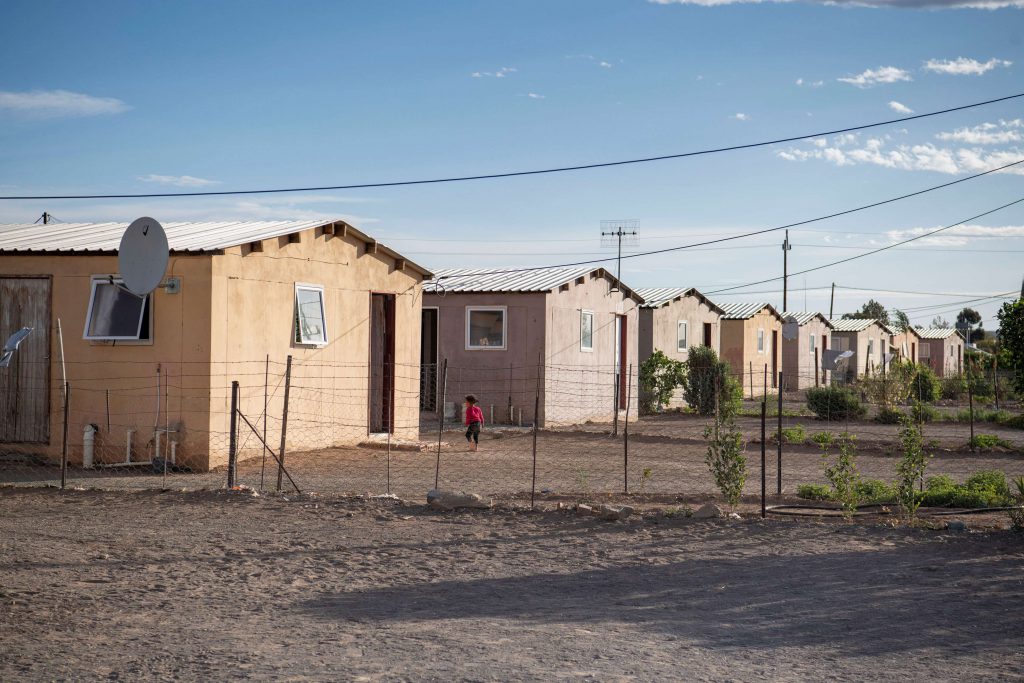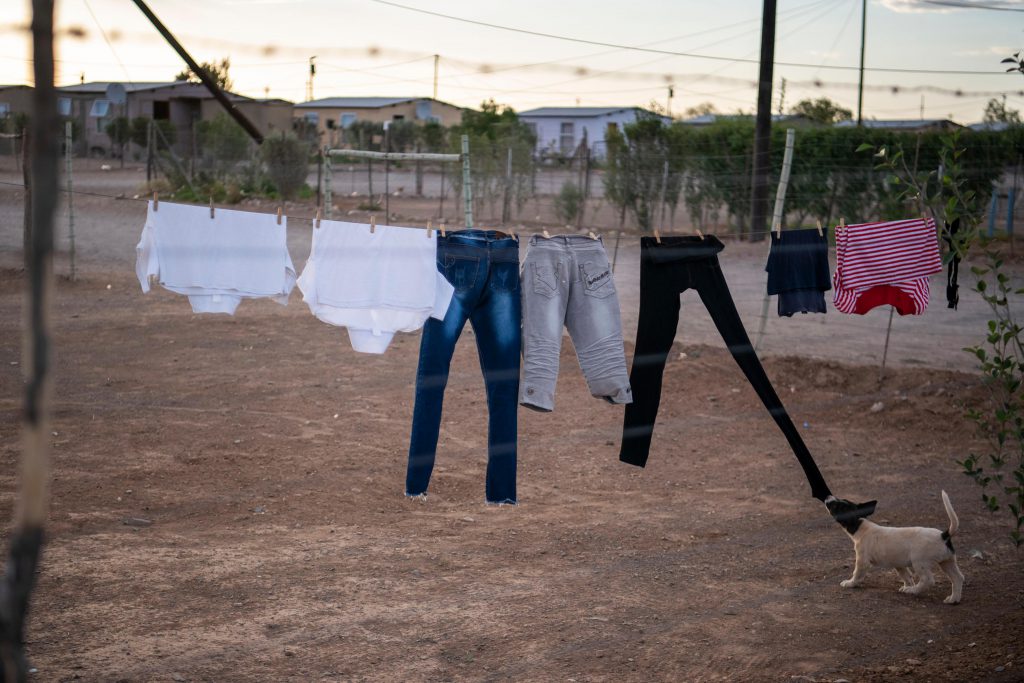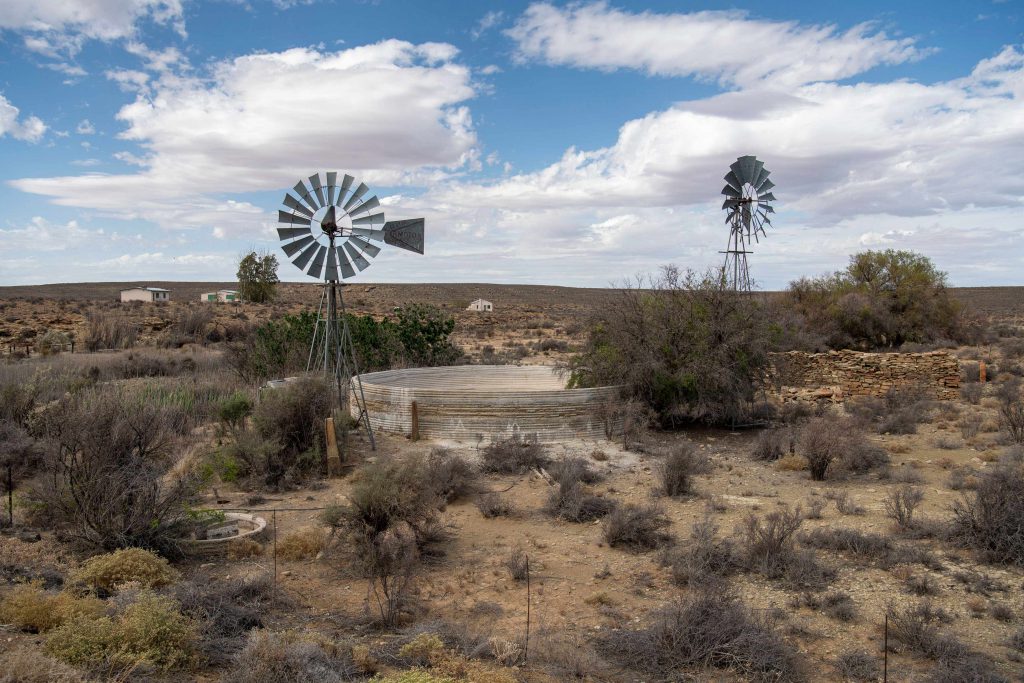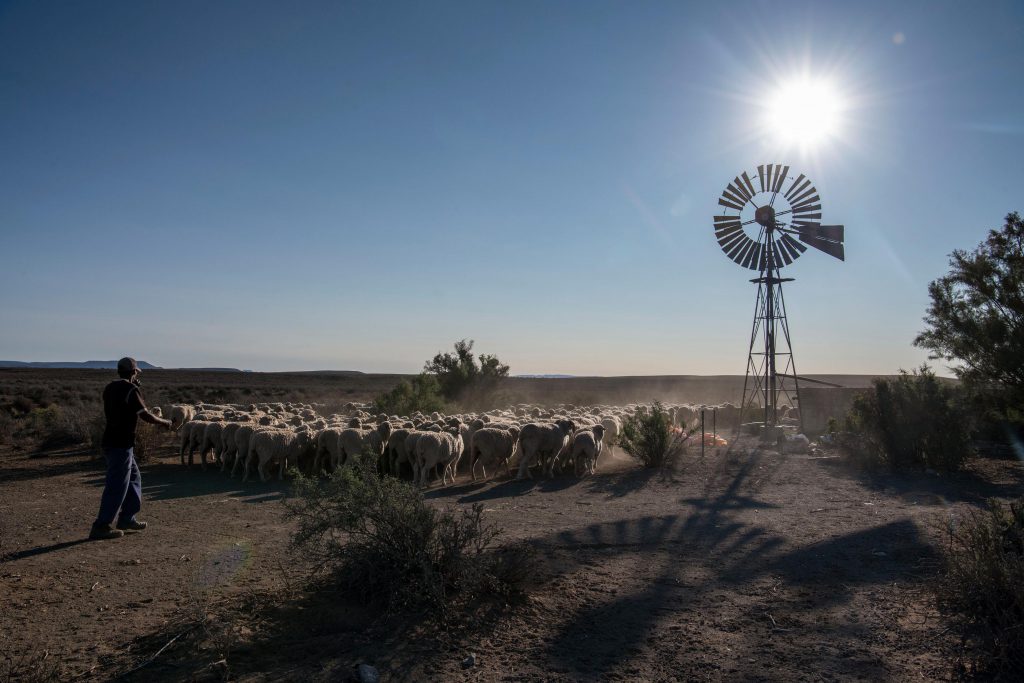Special report | Seven lean years in the Northern Cape
As the Karoo hopes for an end to its worst drought in a generation, the region’s history may hold important lessons for its future.
Author:
17 February 2020

Heleen van Wygharden loves to dance. In the 1970s, still in her early thirties, she attended a dance with other farm workers. Between pirouettes, she started to notice the guitarist who was guiding her steps from the edge of the room. Piet was short and quiet and never entered the fray. “Hy is nie ’n baie goeie danser nie. Maar, Jissus, hy kon kitaar speel (He’s not a very good dancer, but, Jesus, he could play guitar),” remembers Heleen.
Life was never quite the same again. At the end of the night, Piet and Heleen left together, she on the handlebars of his bicycle.
Like his father before him, Piet, now 74 but still short and quiet, has spent his life mending tractors and tending sheep. Three of the four sons he raised with Heleen on the farm where they worked are now farm workers themselves. The Van Wyghardens have always been entangled with Karoo farms.
-
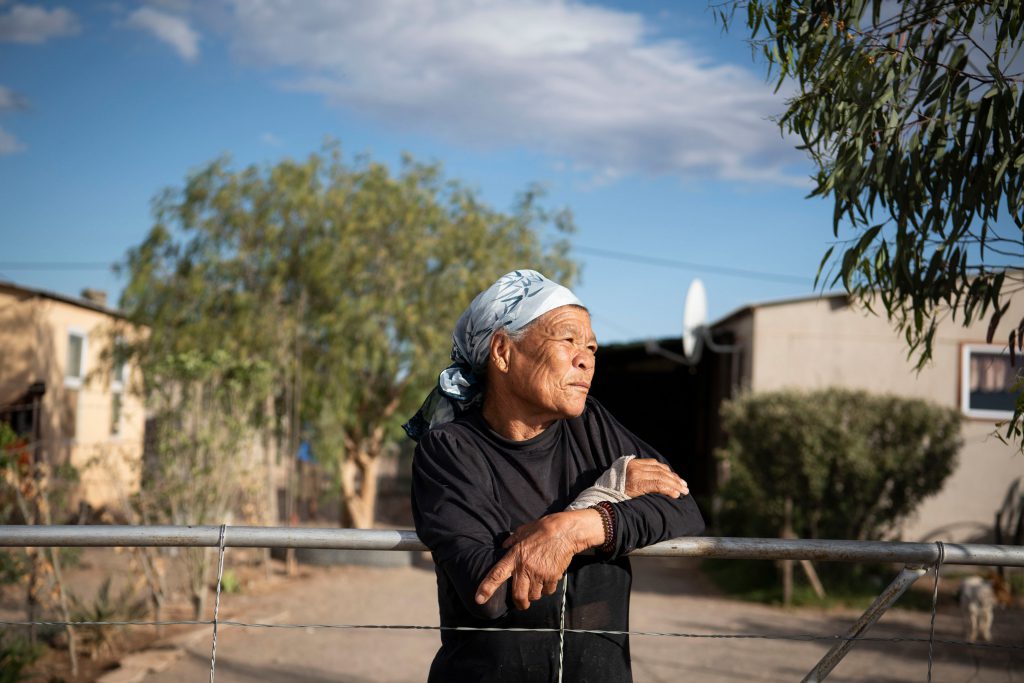
Heleen van Wygharden leans on the gate of their property in Fraserburg’s township. -
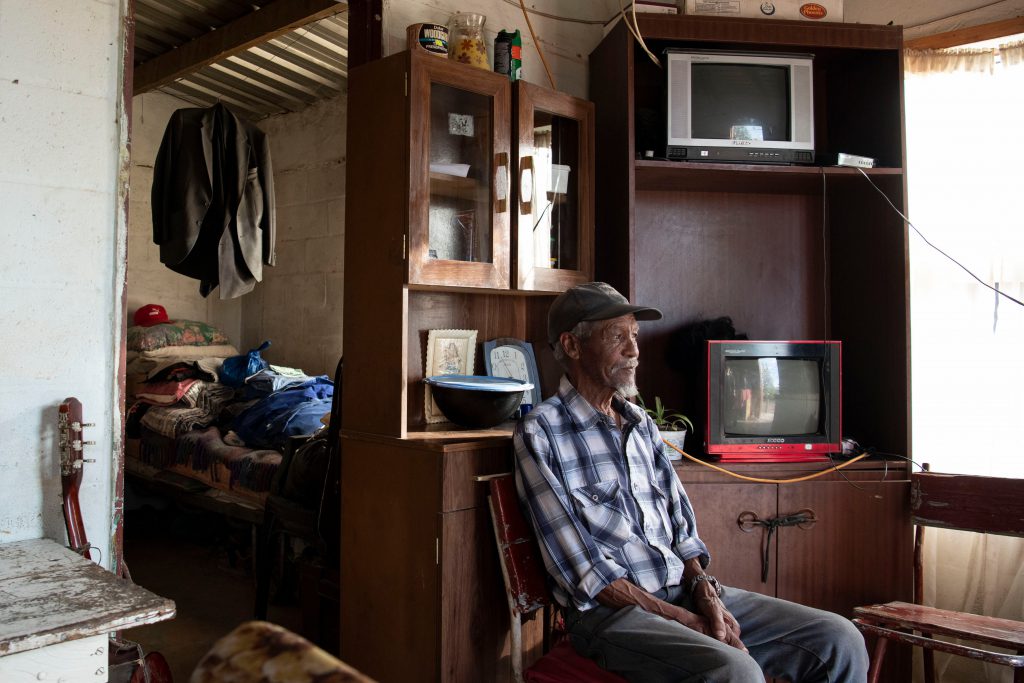
Piet van Wygharden in the home he shares with wife Heleen. The jacket of his only suit hangs in their bedroom. -
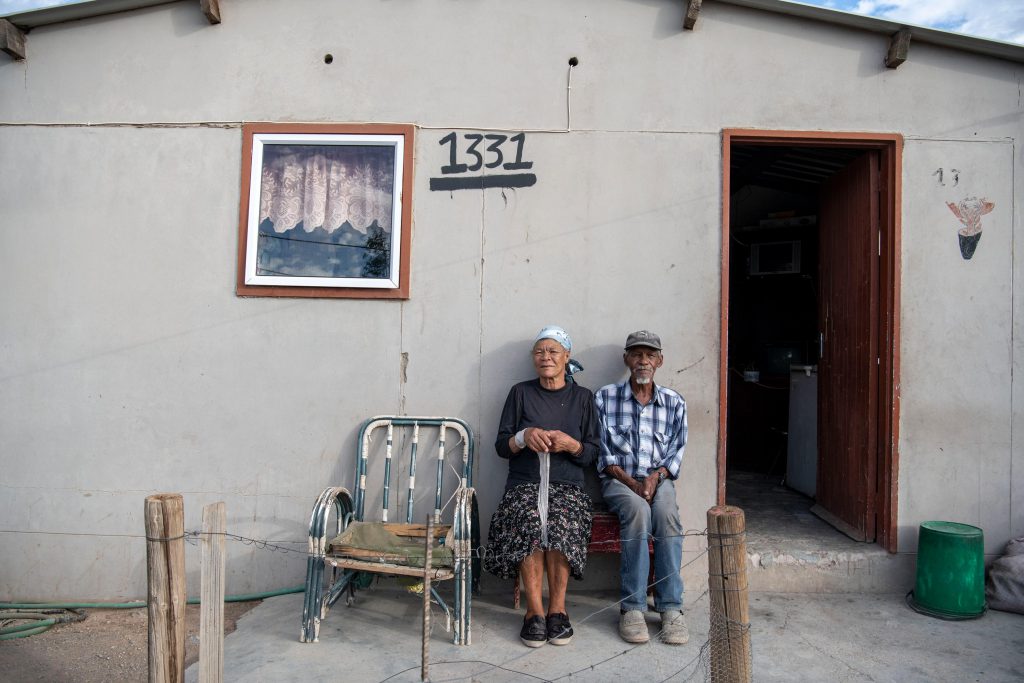
Heleen and Piet van Wygharden were evicted from the farm they had lived and worked on for years because of the drought.
That was until two years ago, when Piet and Heleen were evicted from their farm home.
As work has been casualised since the final years of apartheid, so workers have been forced from their homes on farms at an alarming rate. A 2005 Social Surveys and Nkuzi Development Association study estimated that 1.7 million people were evicted, most of them illegally, from South Africa’s farms between 1984 and 2004.
But there was an added force behind the Van Wyghardens’ eviction: it came at the height of the Northern Cape’s worst drought in a century.
A history of dryness
The horizon around the small Northern Cape town of Fraserburg – where the Van Wyghardens now live in a township proliferating with shacks, in part because of evictions like theirs – is as crisp as a new envelope.
If the Karoo were a clock face, Fraserburg would be at four o’clock. Founded in the 1850s on the Roggeveld – a plateau in the southwestern corner of the Karoo – as one of the first church towns that followed the Northern Cape’s initial mission stations, Fraserburg has come as close as any town in the province to being shut down entirely by the drought.
The surrounding veld, made up of a thousand shades of brown and grey, traditionally supports Fraserburg’s population of around 3 000. It sustains the flocks of sheep that are the backbone of the region’s economy. Walk into it, and the Karoo’s delicate ecosystems come to life. Squeeze the leaves of the rivier draaibos and it smells of sweat, while the fat little leaves and angry, thorny dome of the kriedoring offer protection to other, juicier plants, like the klappiesbrak. These are ovine delicacies.
But the vast majority of the shrubbery has turned grey and woody. After seven years of gruelling drought, the veld is literally dying of thirst. Dry as dust, it won’t recover, even if the seasonal rain finally arrives around Easter.
Katrin Goliath, who at 84 still competes in regional line dancing competitions, has lived in Fraserburg long enough to remember a different town. She moved here in the 1940s, at a time when the now-antique town bell was rung for two reasons: fire and the 9pm curfew for families like hers who were classified as coloured by the apartheid regime. Her creased face folding into another of her almost constant smiles, Goliath remembers streets lined with pear trees and streams running through the town.
-
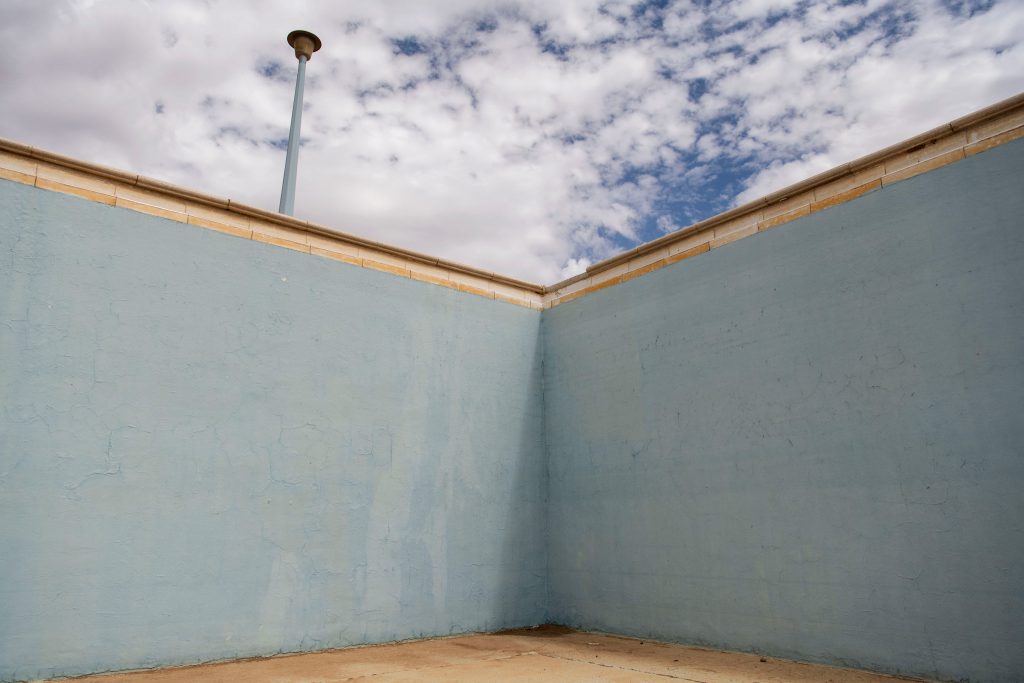
Williston’s public swimming pool now stands empty. -
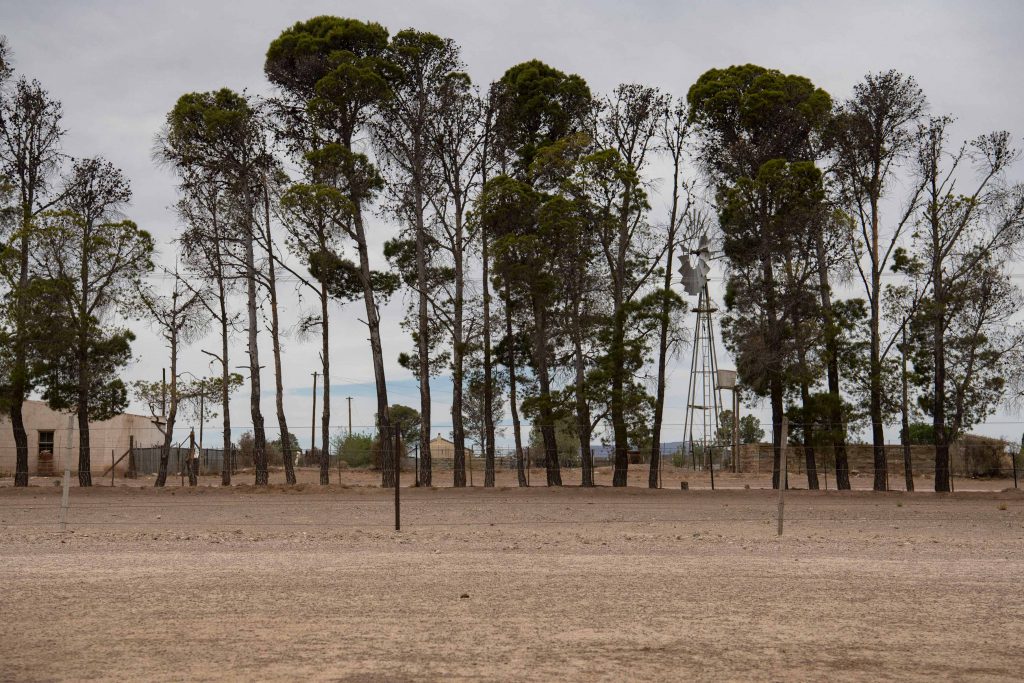
Fraserburg is now a vastly different place to the town Katrin Goliath remembers. -
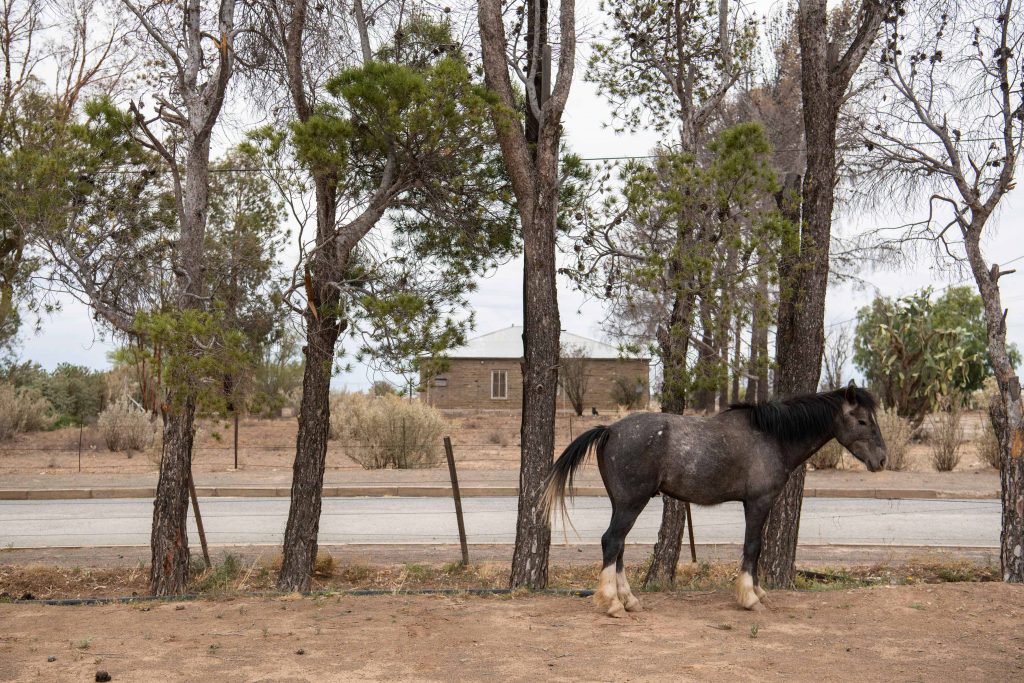
-
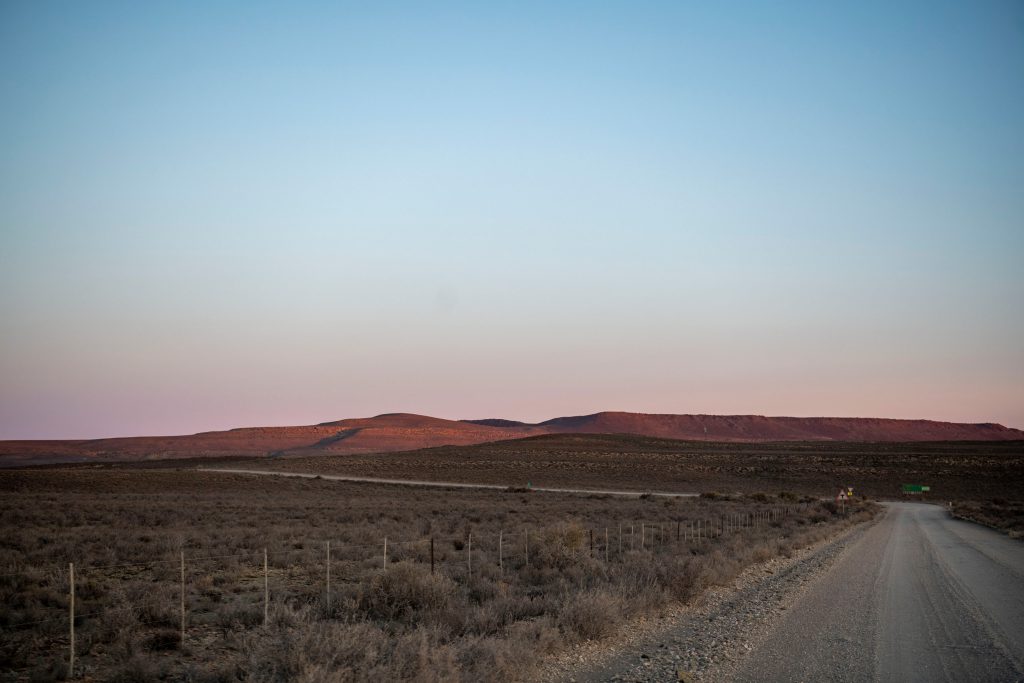
The arid landscape around Fraserburg. -
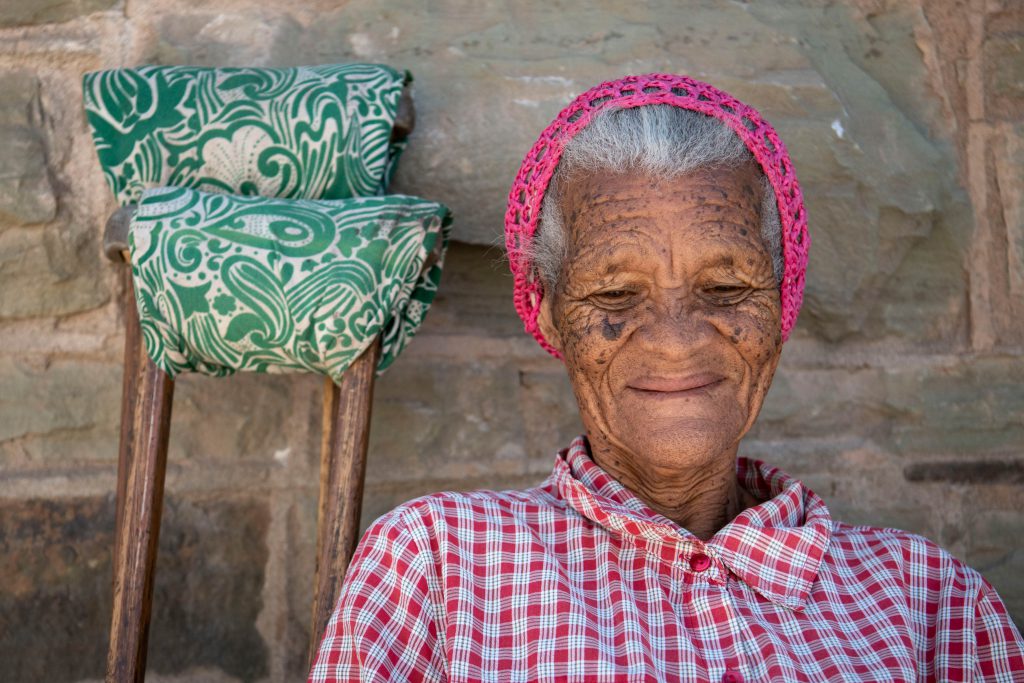
Katrin Goliath remembers streets lined with pear trees and streams running through the town.
The nearby Rietfontein spring ran until the 1950s, before people started sinking boreholes in and around town. Fraserburg’s groundwater was once replenished by two nearby dams. When they overflowed, the town would celebrate its very own public holiday. They called it Dam Day.
Things have changed, says Goliath. There hasn’t been a Dam Day in Fraserburg since the 1980s. “Dis nou gebrand van die droogte (It’s now burnt from the drought),” she says.
But, Goliath’s memories notwithstanding, drought is nothing new in the Karoo. As early as 1923, the region was the main reference point for the Drought Commission. An expression of the serious concern at the time that South Africa might be drying up, the commission was one of the first major conservation efforts in the country, eventually resulting in the Soil Erosion Act of 1932 and the Soil Conservation Act of 1946.
The truth is that, in the Karoo, the rain has always come and receded again. As recently as the decades leading up to 2012 – and particularly since 2007 – Karoo rainfall was so heavy it led scientists from the Grootfontein Agricultural Development Institute and the South African Environmental Observation Network to conclude that “all degraded veld has increased in grassiness and none remains”.
Drought and relief have taken their respective turns. Long-term records suggest rainfall and drought cycles of between 20 and 50 years during the past 123 years. That means that the past seven years, as devastating as they may have been, are only the beginning of what will likely be a multi-decade dry spell.
How a desert was made
But if drought has been part of life in the Karoo for so long, why have the past seven years been so devastating? Part of the answer is that the region may no longer be as good at dealing with it.
The Karoo makes up about 30% of South Africa’s land area. While the region is widely viewed as a socioeconomic backwater today, it was not always that way. The Cape’s first prime minister, John Molteno, was from the Karoo. So was Olive Schreiner, a major South African novelist (her description of the Karoo as a place of “weird and almost oppressive beauty” still holds true).
But more broadly, the outset of colonialism in the Cape marked the beginning of the Karoo’s steady incorporation into a global capitalist system. And while minerals are more often than not at the heart of South Africa’s economic history, pastoral production has often played as important a role in shaping economic fortunes. This was especially the case in the Karoo, which was home to one of the more recent animal domestications, the ostrich.
During the 19th century, according to Oxford historian William Beinart, the region generated more wealth than Kimberley during its first century of diamond production.
Agricultural innovations – drilling machines, wind pumps, wire fencing, veterinary breakthroughs and the adoption of lucerne – that accompanied 19th century colonial settlement vastly improved wool yields. At the beginning of the 19th century, around 1.5 million (mostly flat-tailed, non-woolled) sheep roamed the Karoo. By the close of the century, before drought and the onset of the South African War diminished flocks, 12 million merino, generating up to 34 000 tonnes in wool exports, had flooded the region.
As indigenous predators were all but exterminated through poisoning and slaughter, wildlife hunted en masse and the Karoo’s burgeoning private property regime encouraged through government-subsidised fencing, the merino sheep became a monocrop in the region.
The demand for mutton that followed the discovery of diamonds in 1866 and gold 20 years later only knitted the Karoo further into the fabric of global markets.
The impact of this settlement and grazing was immense and can still be traced in the region’s ecological fragility today. Over-irrigated land became salinised and indigenous predators were not the only species that faced extinction in the face of the new settlers. By the late 1870s, the quagga had been exterminated. After that, the wild rye grass from which the Roggeveld takes its name vanished, and then the sterboom, which was used as firewood in the Karoo’s growing urban centres.

The fate of the Karoo veld has been intimately tied to global geopolitics ever since. When the United States intervened in the Korean War in the 1950s, its troops were not prepared for the cold weather, creating an almost instantaneous global demand for wool. The Karoo groaned under the weight of market forces once more as the sudden boom in the wool price (farmers joked at the time that a handful of wool could buy you a car) saw an explosion in the number of sheep grazing in the veld.
The government eventually intervened, rewarding reductions in stock numbers, and by 2007 the Karoo was supporting about a third of the cattle, sheep and goats that it had in 1930. While some researchers have suggested that the reduction in livestock has put the Karoo on a path to recovery, others point out that “many parts of the Karoo … still show signs of persistent degradation”.
Rain. And more rain
The fragility of the Karoo veld is not lost on Guillau du Toit. It is at the front of his mind as he relays the struggles of farming during drought. “People think we farm with sheep,” he says. “We farm with veld.”
Du Toit, who is stout but soft-spoken, points to a map of his farm while explaining the delicate timing of moving flocks between camps so the veld is allowed enough time to recover before the sheep return. His outlook on farming has been shaped by drought from the first. He started his farming career during the Karoo’s last major drought in the early 1980s. But the past seven years, he says, have been the worst for a century.
-
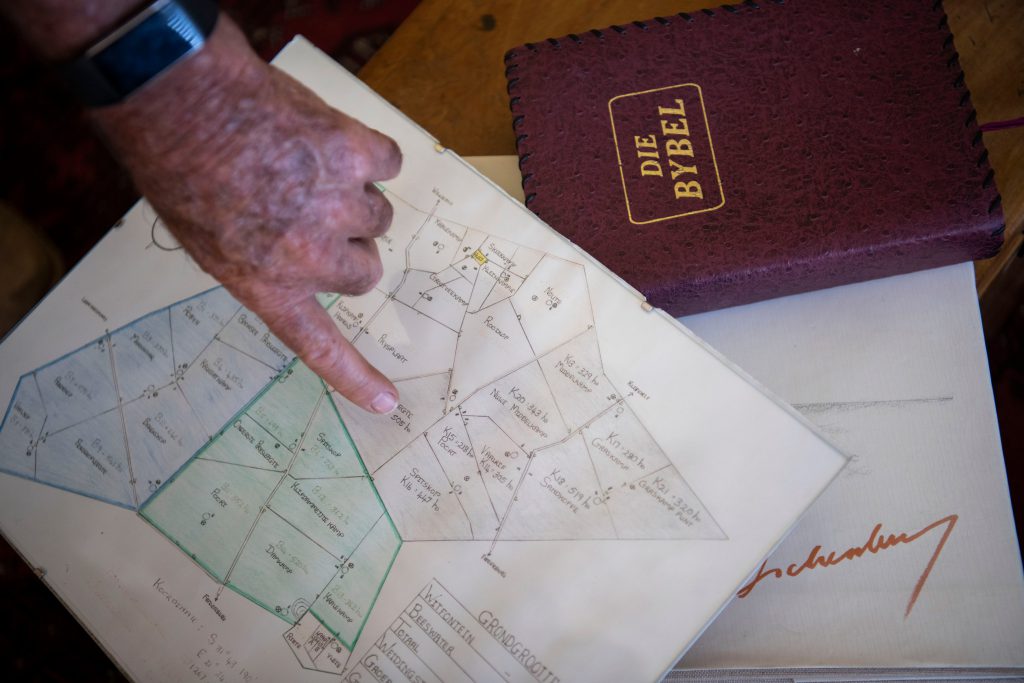
Guillau du Toit explaining how he moves his sheep between camps to preserve the veld. -
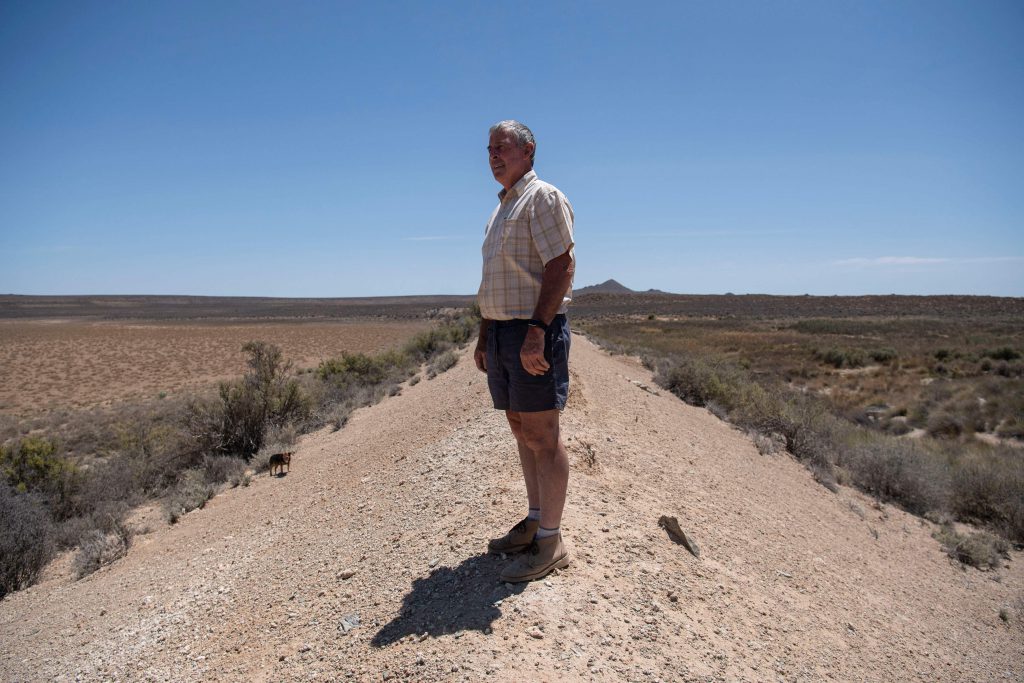
Guillau du Toit on the wall of an empty dam on his farm outside
Fraserburg. -
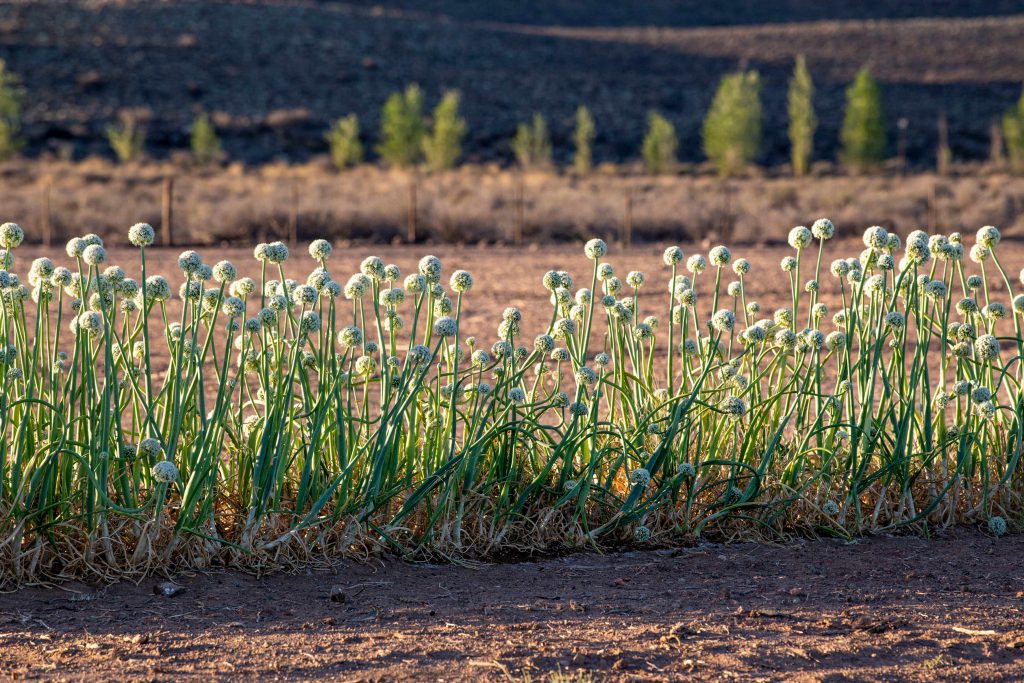
The drought has forced farmers to diversify. Some have started farming ostriches and others, onion seeds. -
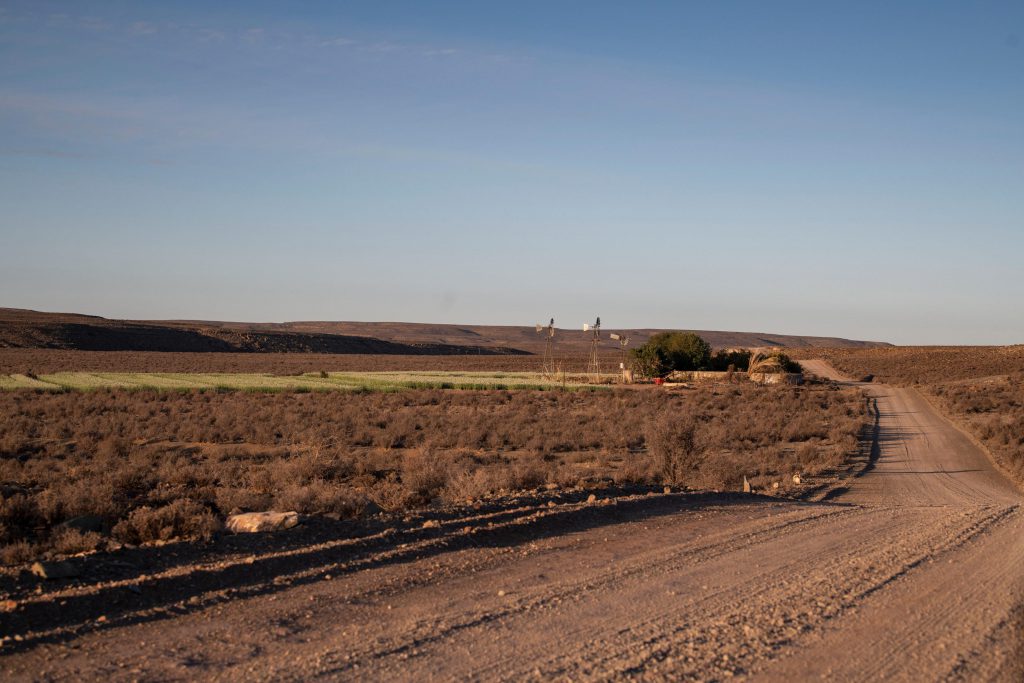
A patch of green in the otherwise bare landscape, where farmers have planted onions.
According to Du Toit, who predicts that at least 15% of the surrounding veld will not grow back, rain won’t end the crisis imposed by the drought. “We need rain. And more rain. And more rain. And more rain. And more rain,” he says.
Du Toit will be the last in a farming family. None of the third-generation farmer’s three sons will follow in his footsteps on the farm that his grandfather bought in the 1940s. And he is glad for it. Du Toit is an example of how farmers in the region are no longer willing to hedge their bets on wool. Some have turned to farming onion seeds, which are among the few crops that can produce profitable yields at scale in this region. Others are investing in ostriches, which, while fussier than sheep, are less land-intensive.
Du Toit is investing in property in and around Stellenbosch. He is also among the farmers in the region who say they have been forced to shed labour from their farms as a result of the drought.
No work
The motto at Fraserburg’s high school is “Daar’s Werk!”. It translates as “There’s Work!”
There isn’t.
The drought has created a few isolated opportunities. As some farmers turn away from sheep and towards ostriches, for instance, there are new opportunities for builders like Cornelius Nieuwenhoudt, 63. Despite severe back problems, Nieuwenhoudt is “not a man who believes in standing”. The reputation of his eight-strong team of builders – who are mostly family members – for speed has them in high demand constructing ostrich hatcheries.
But for the most part, the drought has combined with the general trend toward casualising farm labour to decimate local employment opportunities. Agri SA’s recent drought report claims that, year-on-year, employment in Northern Cape agriculture fell by 22.5% between 2018 and 2019.
-
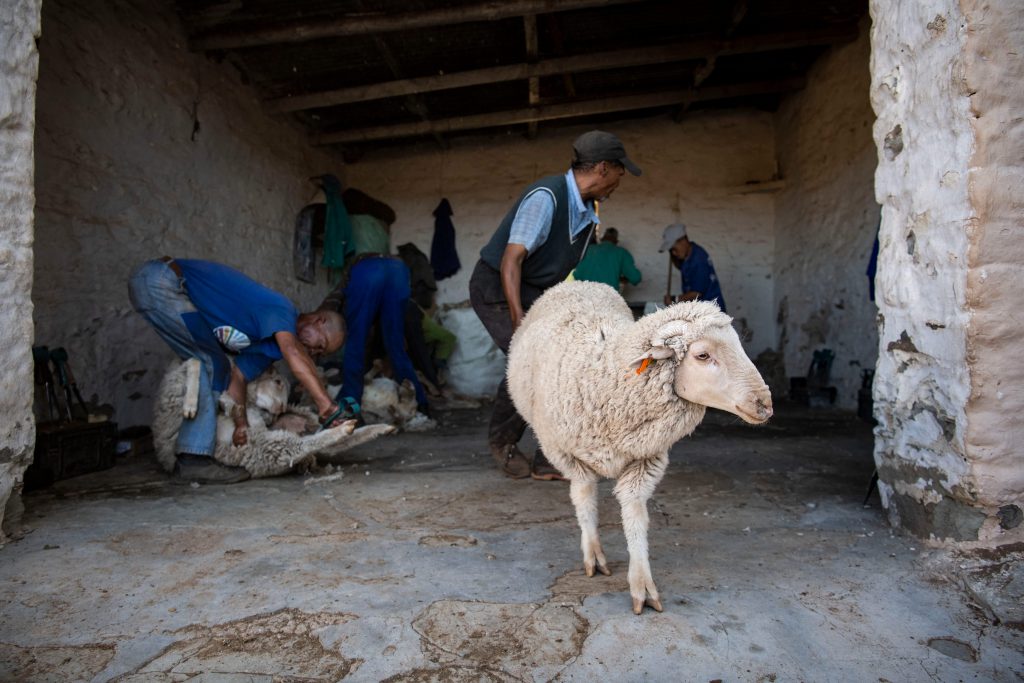
Abraham de Bruyn’s team of sheep shearers. -
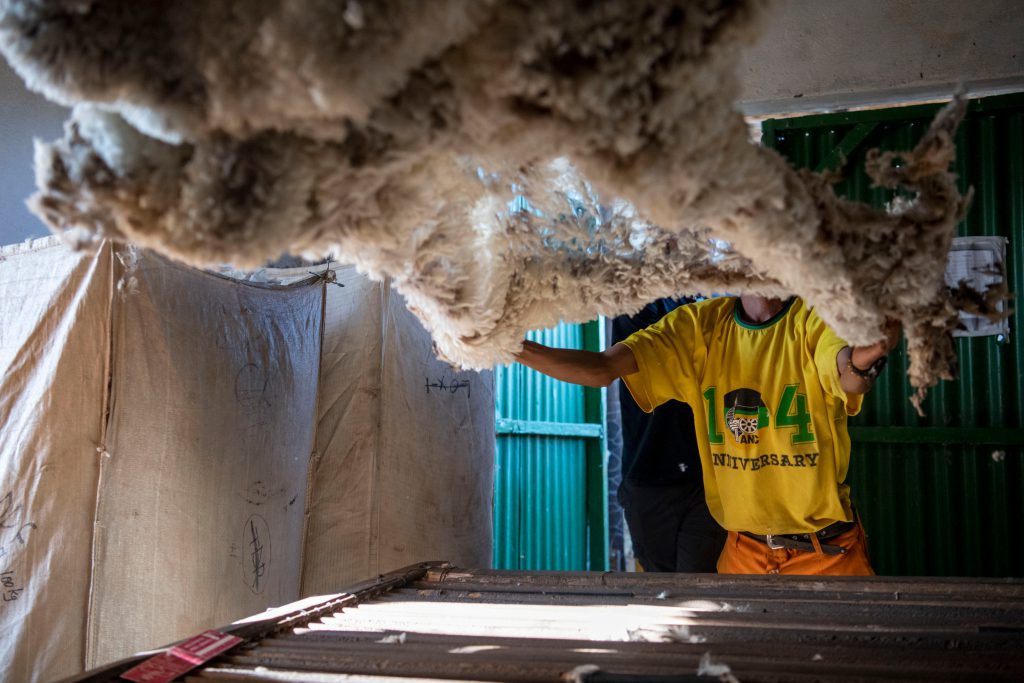
A full fleece being laid out on the sorting table. -
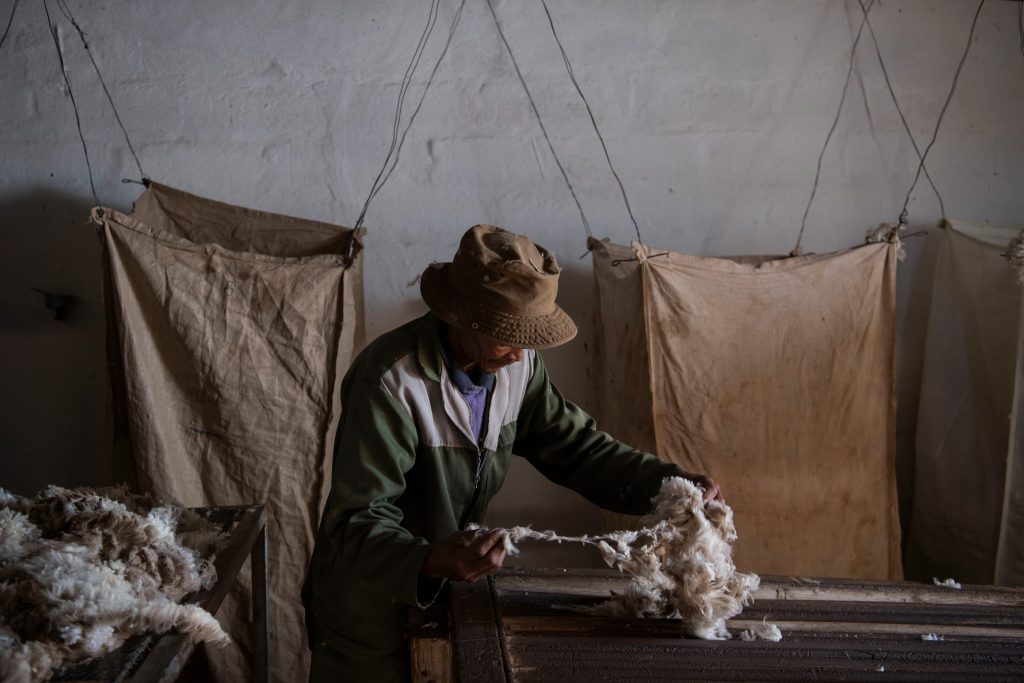
Wool sorters divide up the fleece according to quality and length. -
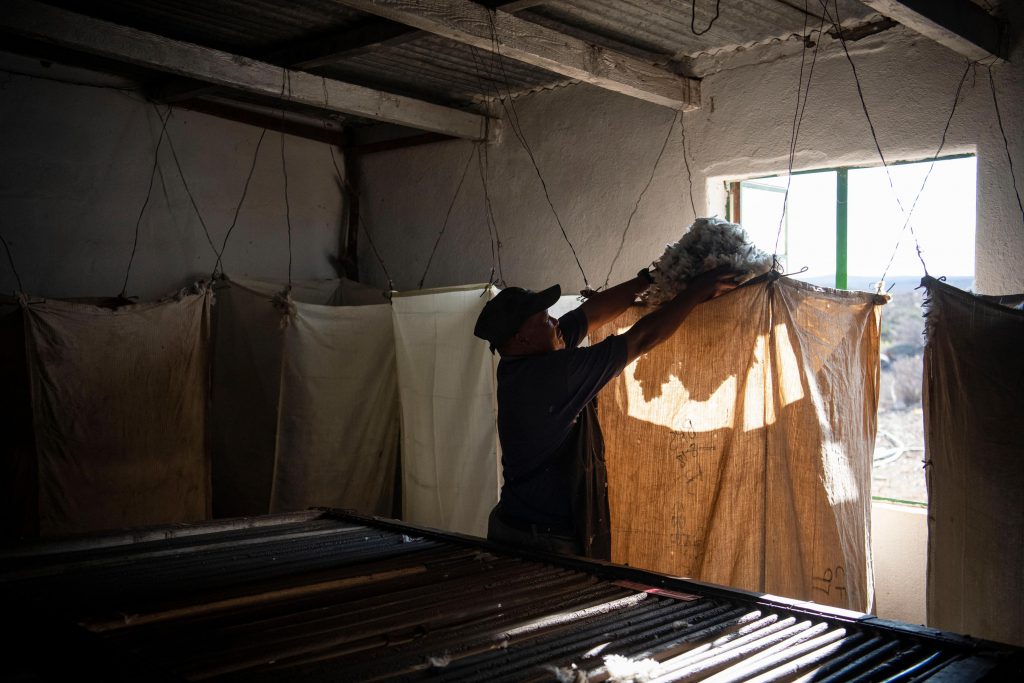
The wool is sorted into bales. -
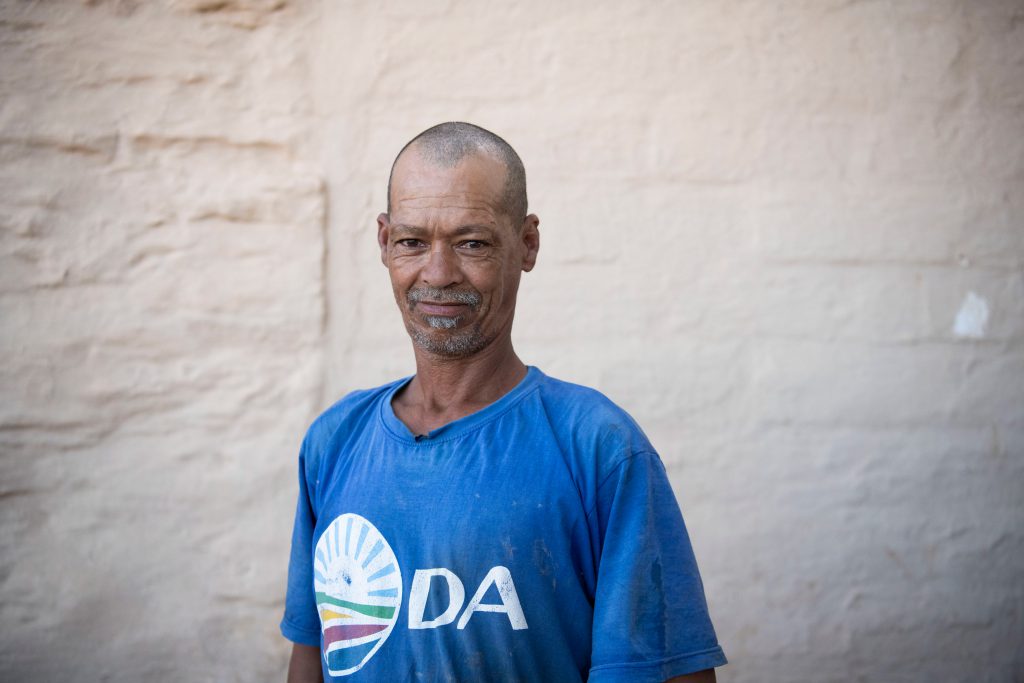
Abraham de Bruyn and his team once counted on two shears a year.
Abraham de Bruyn leads one of Fraserburg’s famously skilled sheep-shearing teams. A drawn-back lower jaw makes him appear shy when he smiles, which belies an extraordinary confidence with shears in hand.
Removing the thick woollen coats requires a balletic wrestle between shearer and sheep. Decades of the dance have made De Bruyn’s body elastic and quick. With every expert move, he whispers reassurance to the sheep – “Ons gaan nou klaar wees (We will be finished soon)” – or chastises them in low grunts – “Man! Sit still nou! (Man! Sit still now!)”.
He will earn R7.10 for every sheep he shears, which, if he works well, will be 40 in a day. His team members will earn R6.90. But as the drought suffocates the veld on which the sheep feed, so jobs like these on the farms are dwindling. Where De Bruyn and his team of shearers once counted on two shears a year, they are now lucky if they shear once in eight months.
-
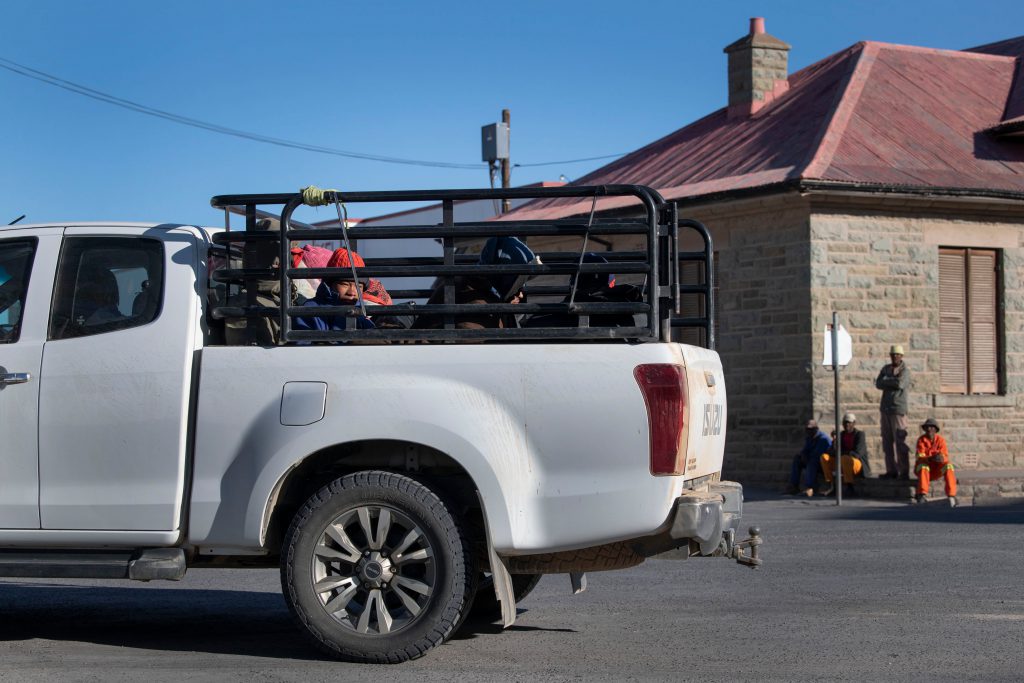
Fraserburg farm workers waiting for piece jobs. -
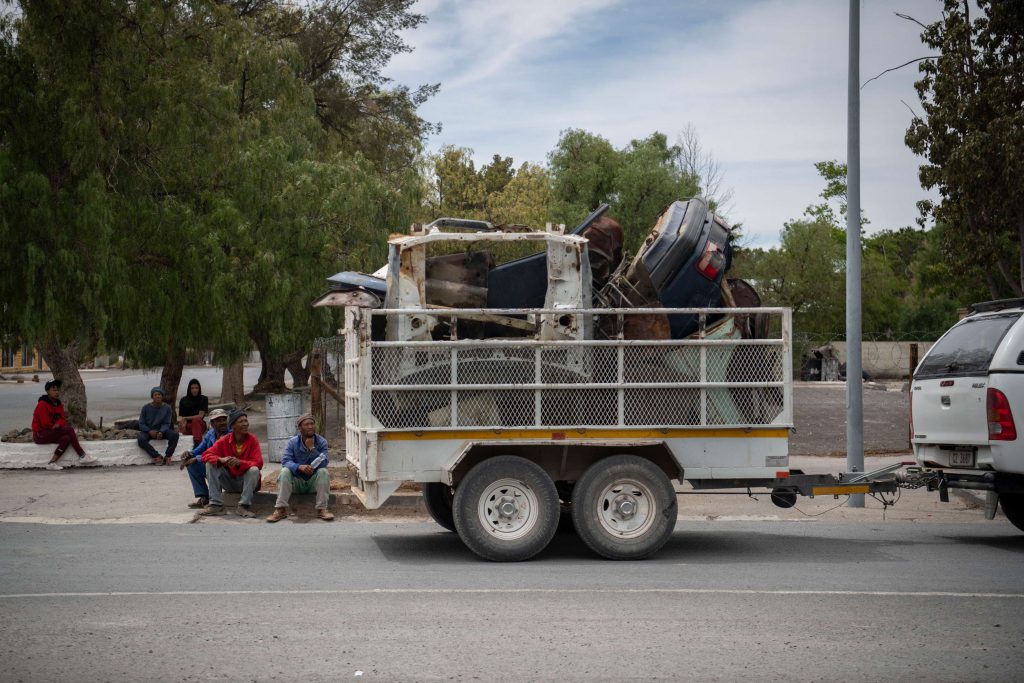
The drought has cost many farm workers their full-time jobs. -
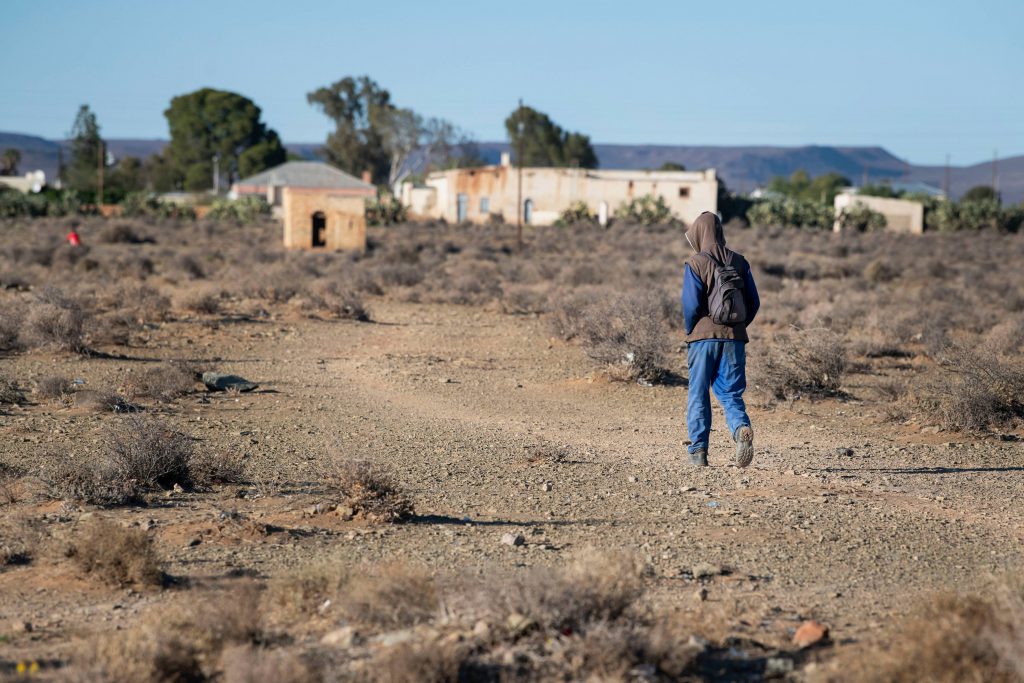
Farm workers tread the footpath to town in the hope of getting piece work. -
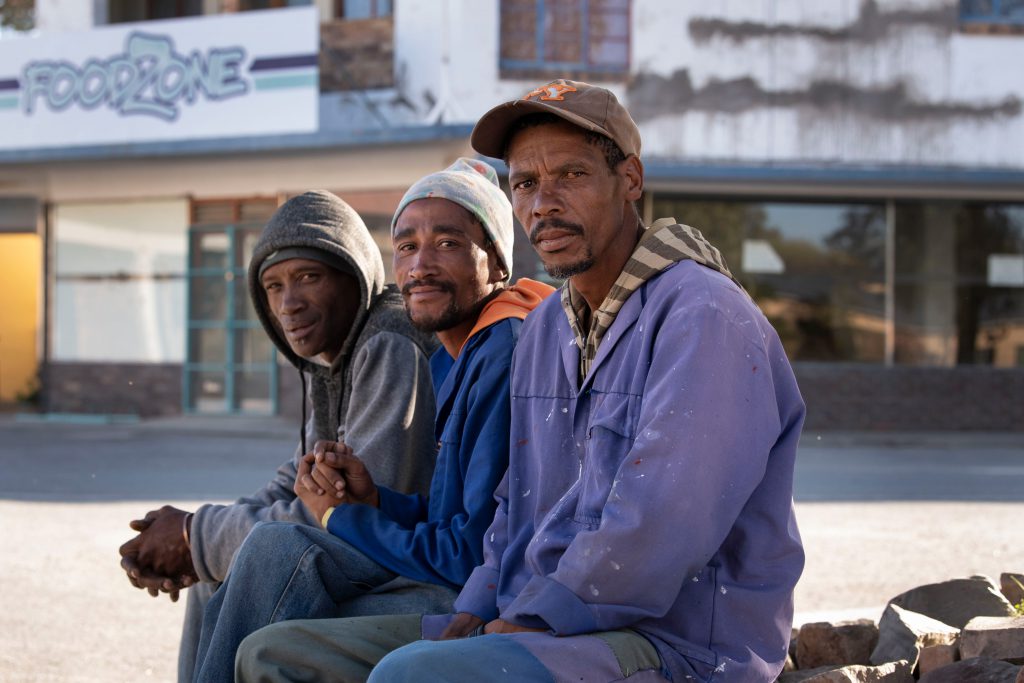
Abraham Maya (right) waits with others for work, sometimes earning R7 to unload a bakkie. -
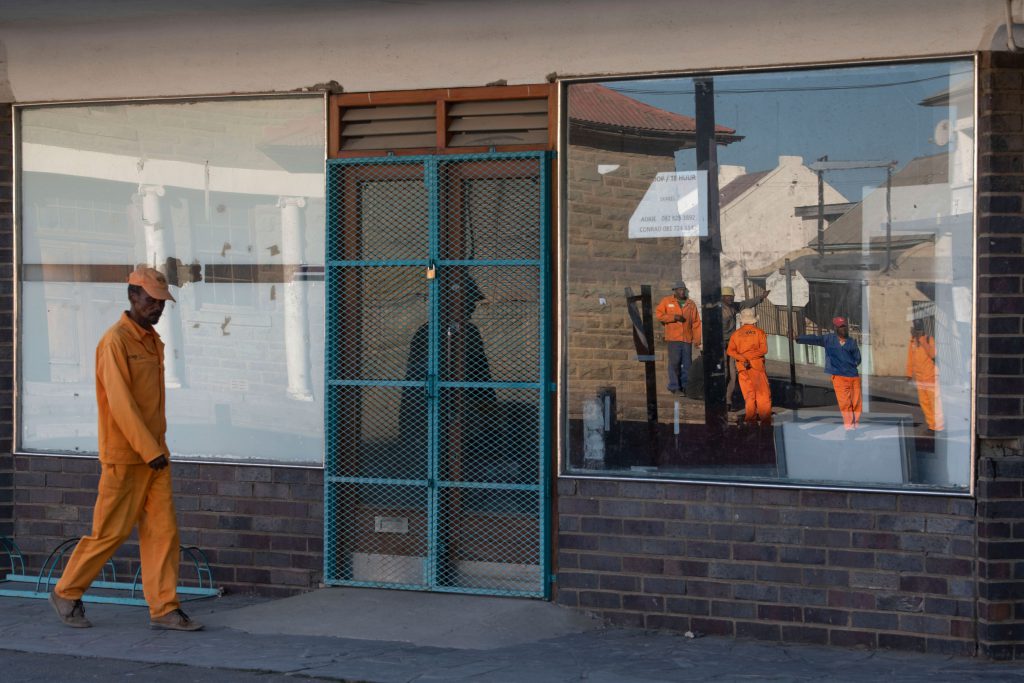
A casual worker walks past an empty shop in Fraserburg, one of the many economic victims of the drought.
While Nieuwenhoudt and his team of builders have been fortunate, and De Bruyn and his shearers have clung to what remains of work on the farms, most of Fraserburg’s farm workers have been relegated to street corners, where they spend days waiting for piece jobs.
Abraham Maya is one of them. Born on a farm outside of town, Maya finally found reliable employment tending sheep and building after decades of casual work. But two years ago, at the height of the drought and around the same time Piet and Heleen van Wygharden were evicted, he was dismissed.
“Die diere is nou min, so die werk is maar min. So gaan die lewe hier in Fraserburg (There are now fewer animals, so there is less work. That’s how life goes in Fraserburg),” is how Maya explains it.
On the one full day of work he is able to find in an average week and the hour-long jobs in between, the 41-year-old is now unable to support his four children. “Elke dag is ek kwaad. Ek weet nie eers vir wie nie. (I am angry every day. I don’t even know with whom.)”
The drought and the havoc it has wreaked in the lives of Fraserburg’s once working residents has cursed the town, says Maya: “Ek dink nie dit sal weer hier reën nie. Daar is ’n groot vetkol hier. (I don’t think it will rain again here. There is a big, fat stain here.)”
Fraserburg has been one of the many economic victims of the Karoo’s particular patterns of population change. While the region has mirrored South Africa’s shift from a rural to an urban country over the past century – largely the result of increasing farm sizes, retrenchments on farms and drought – this change has been heavily skewed towards a few urban centres.
-
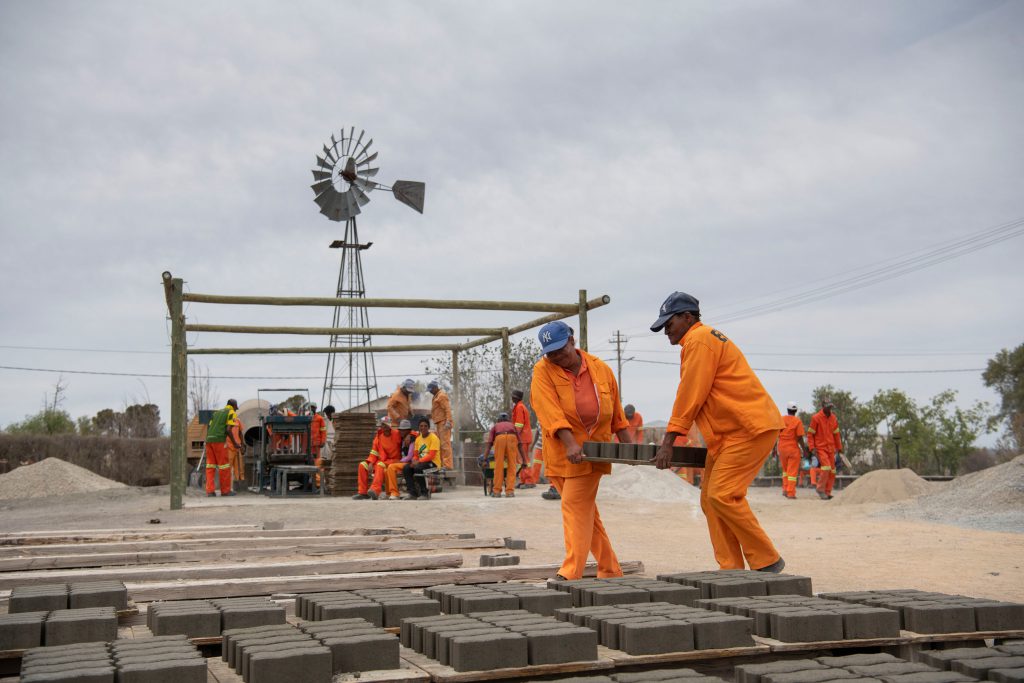
Workers making bricks as part of an Expanded Public Works Programme. -
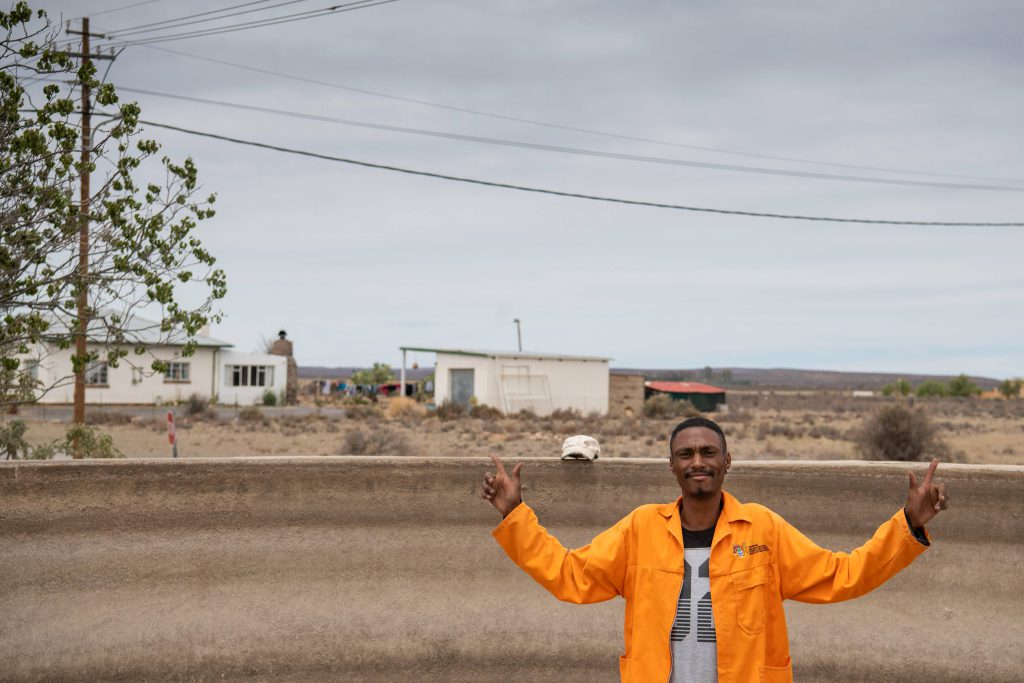
Chondrey Hendricks used to be involved with gangs on the Cape Flats. -
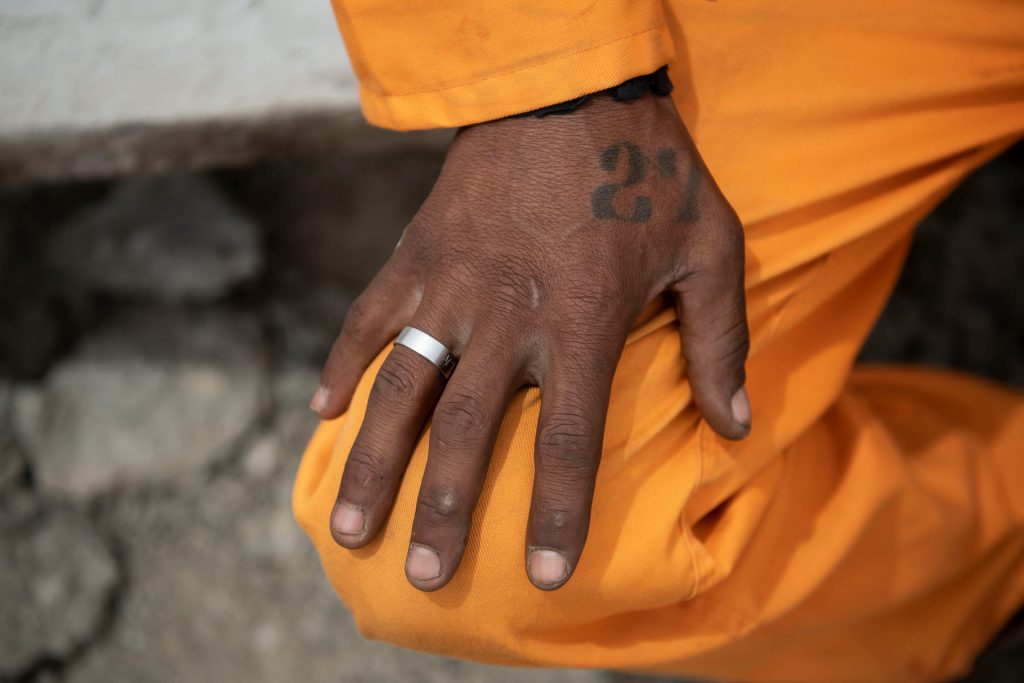
Chondrey Hendrick was once in the 27s gang. -
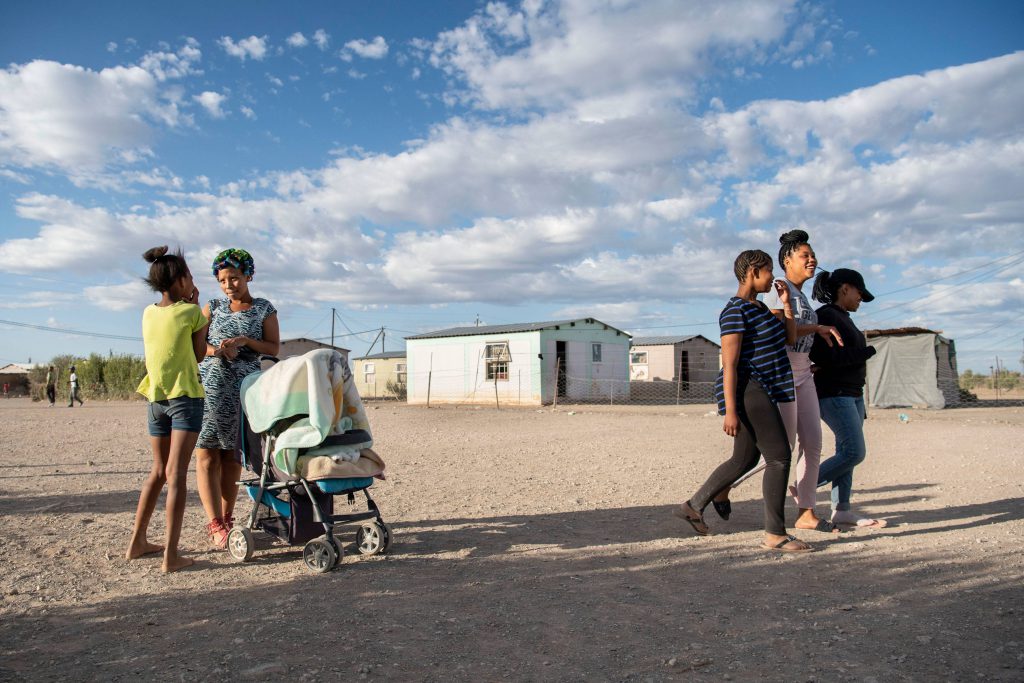
Fraserburg’s population declined by 63% between 1911 and 2011. -
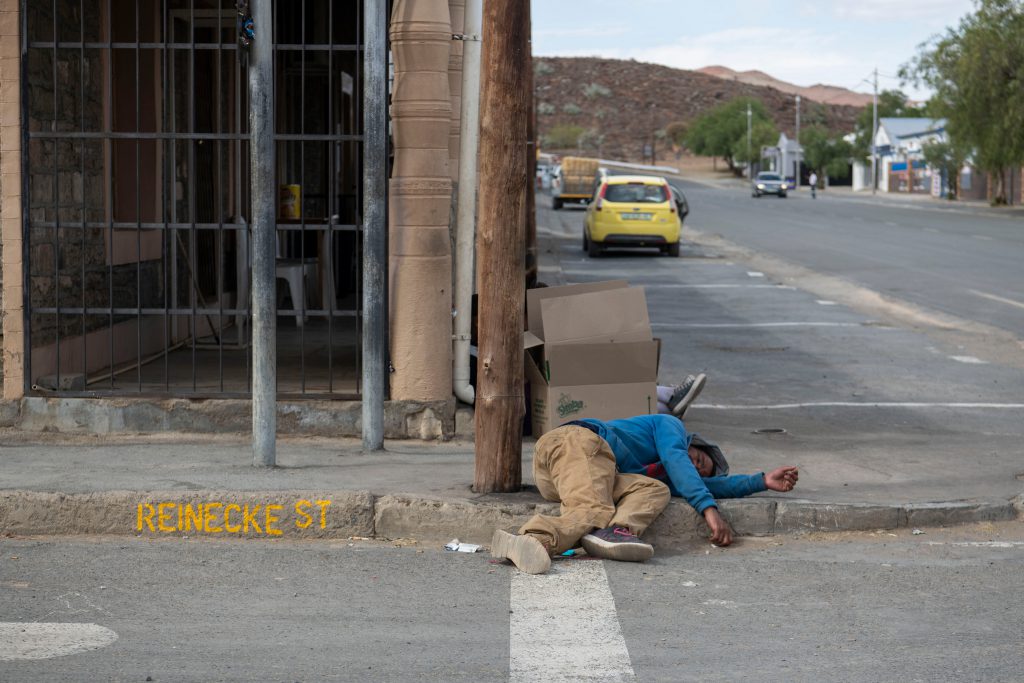
Joblessness in the Karoo leads to social problems such as alcohol abuse, in towns like Williston.
So, where the populations in places like De Aar ballooned by as much as 631% between 1911 and 2011, most of the Karoo’s small towns have shrunk. Fewer people live in Fraserburg today than a century ago. The town’s population declined by 63% between 1911 and 2011, a period over which the populations of nearby Williston and Sutherland shrank by 41% and 26% respectively.
Population growth in the Karoo’s few urban centres has been accompanied by economic centralisation. As small town populations have declined, so have retail and service opportunities. For example, in Pearston, 88% of businesses disappeared between 1888 and 2006. Over the same period, the number of businesses in Cradock grew by 312%.
In the context of job losses in the Karoo’s flagging small-town economies, a generation is coming into a job market in which the state is increasingly the only game in town. Chondrey Hendricks, 30, is one of them. Speaking on a break from making bricks as part of an Expanded Public Works Programme (EPWP), he explains that, “Ek is ’n dorp mens, hoor? Ek het nooit plaaswerk geleer. (I am a town person, you understand? I never learned farm work.)”
Hendricks will earn R11 for each hour he spends making bricks, which will be used for a new driver-testing station being built in town, and for paving some of the roads in and around town. It is his first six-month EPWP contract after returning home to Fraserburg from Cape Town, where 12 years involved with gangs on the Cape Flats landed him in prison.
When the farmers leave
Fraserburg has managed to develop without the tourism that has supplemented the economies of similar Karoo towns. There are none of the antique stores that line the streets of neighbouring Sutherland. And unlike in nearby Williston, there is nowhere to order a cappuccino.
At the heart of the town’s economy – and of its main street of quiet convenience, clothing and bottle stores – is the Fraserburg Landboukoöperasie. Here, the drought figures starkly in the financial spreadsheets and storage rooms, which are stacked high with bags of feed.
With the veld so depleted, usual monthly feed sales of around R1.5 million almost tripled to R4.2 million in October 2019. But increased sales don’t necessarily mean good business. Where the debts owed to the store by farmers were a shade under R5 million in early 2019, they were nudging R10 million by the end of the year.
-
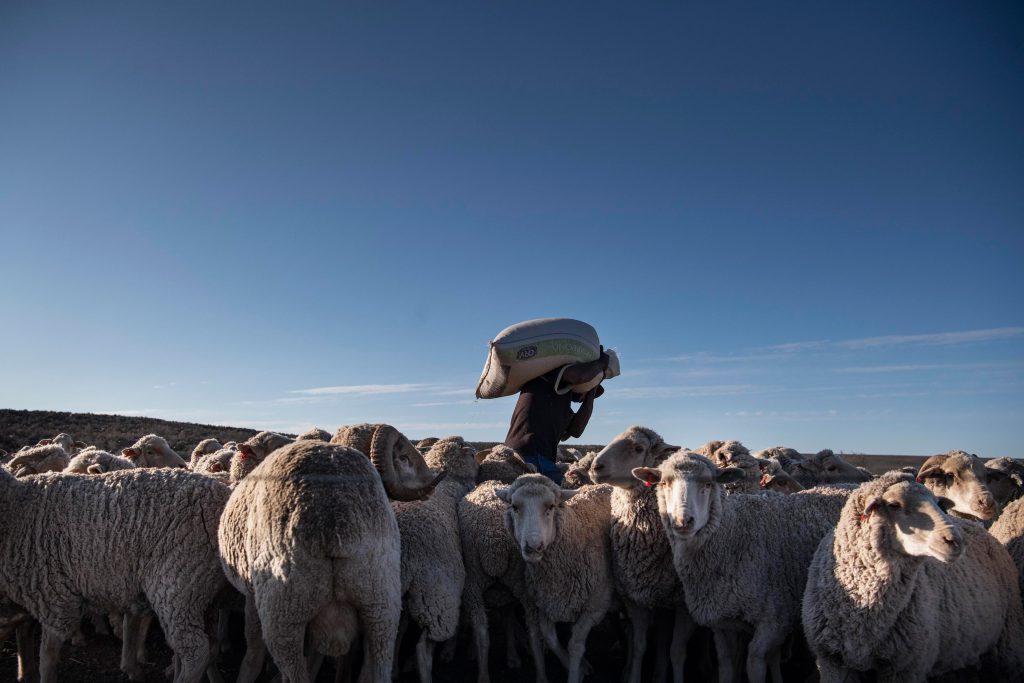
A farm worker giving feed to a flock of sheep. -
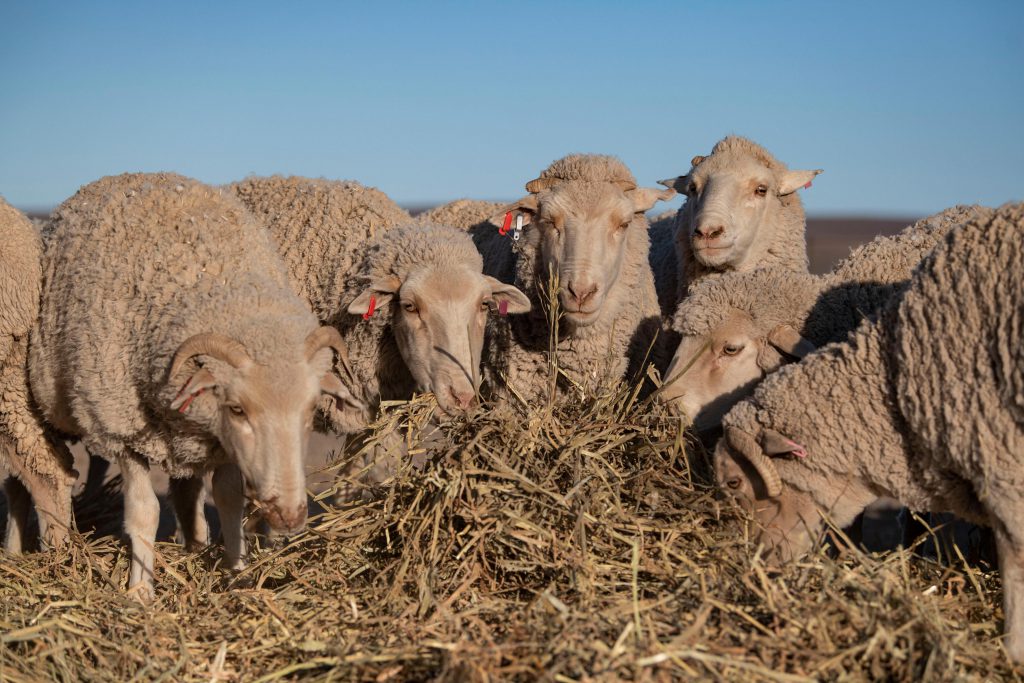
Farmers are racking up huge debt buying feed for their livestock. -
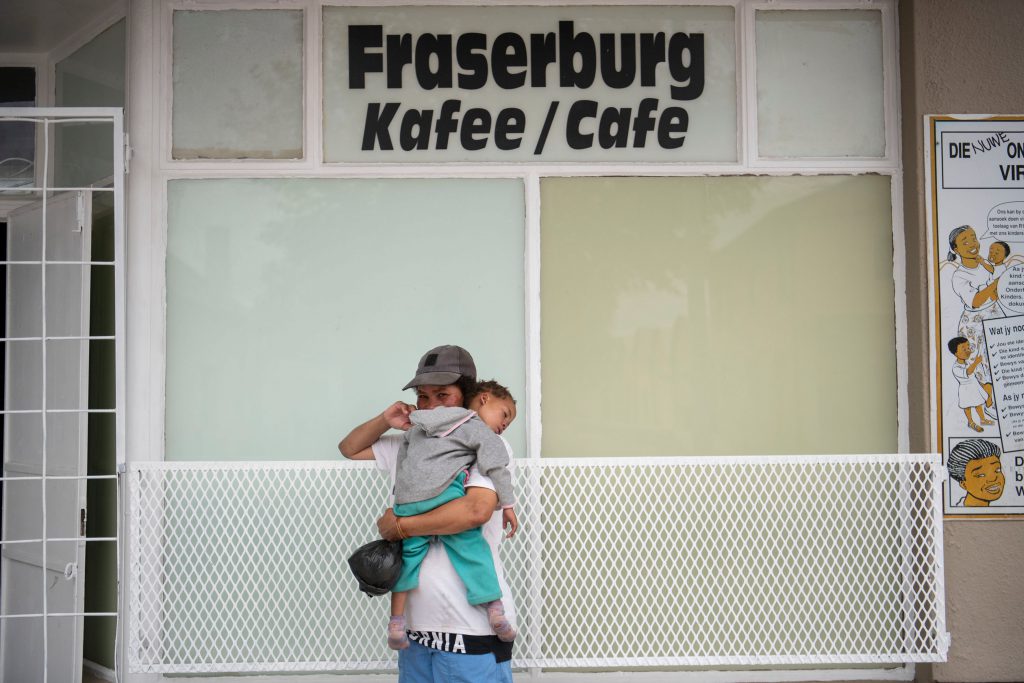
Fraserburg has supermarkets and bottle stores, rather than coffee shops and antique stores like neighbouring Sutherland. -
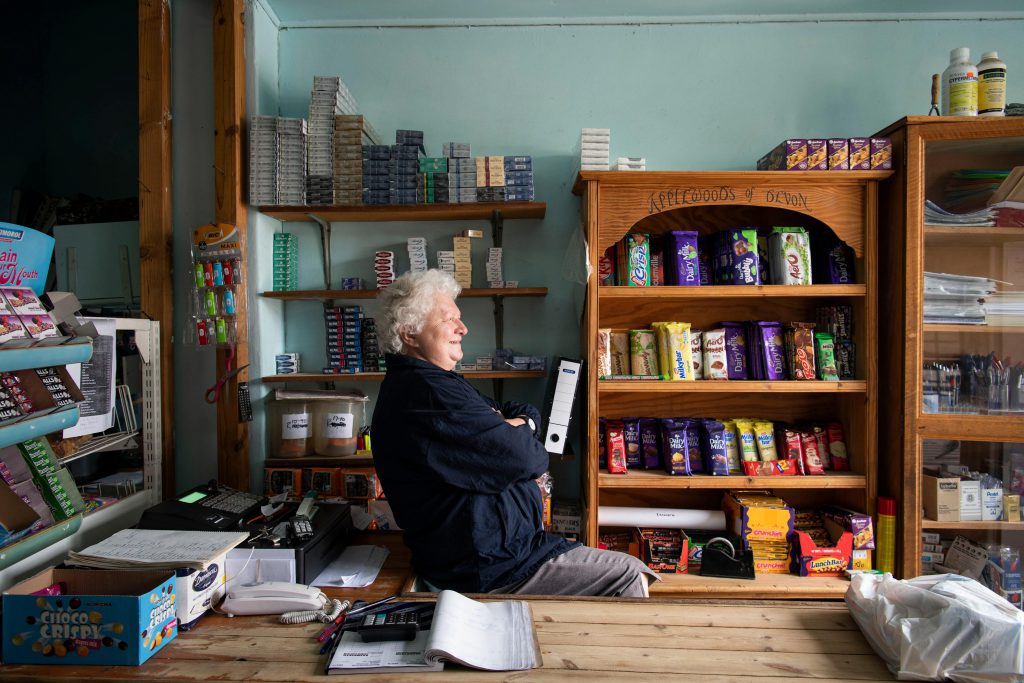
Magda Kruger owns one of the supermarkets in the main street of Fraserburg.
Jaco Saayman, who runs the agricultural co-op, predicts that he will lose 20% of his farmer customers if the Easter rain does not materialise. “It’s unimaginable,” he says of the possibility. “Almost like your family leaving you. I don’t want to consider it.” Fraserburg depends on the co-op for fuel. If it were ever to shut down – which Saayman says is likely without sustained rainfall – the town would enter an economic freefall towards a possible shutdown.
It has rained in the Roggeveld since December. And on 10 January, the Northern Cape was eventually declared a disaster area, paving the way for a possible R300 million in drought relief from the Department of Human Settlements, Water and Sanitation.
But the town’s future still hangs in the fickle balance of the Easter rain, according to many. The rain over the festive season was not enough. The area’s steep topography means it experiences heavy run-off and it needs the rain to keep coming if it is going to make a lasting impact.
Even if the long-delayed annual rain arrives, however, that future is an uncertain one.
-
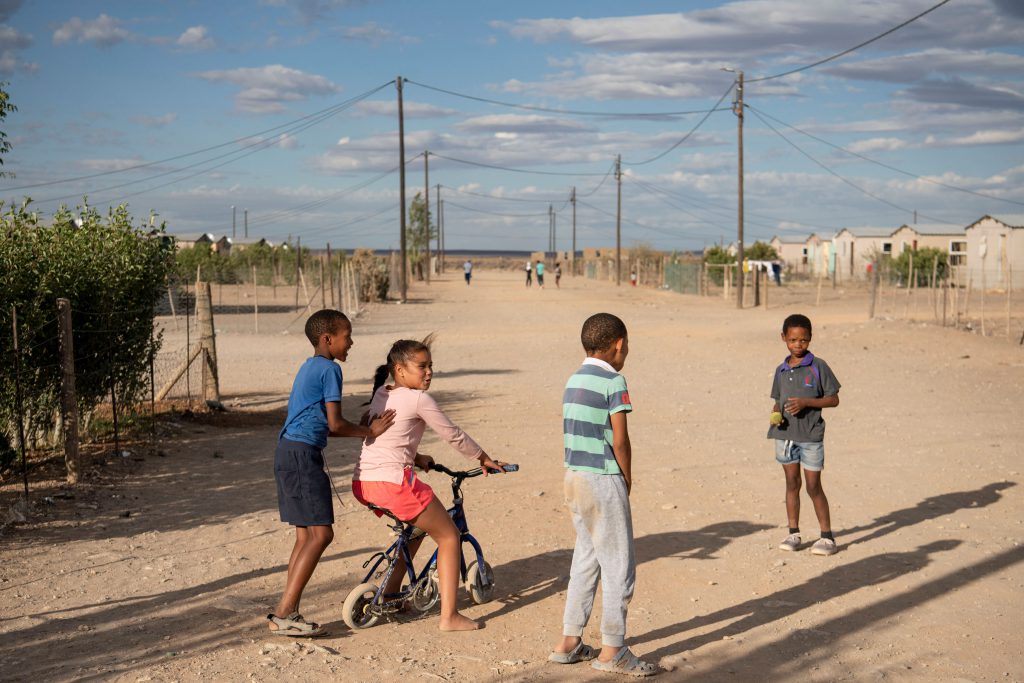
-
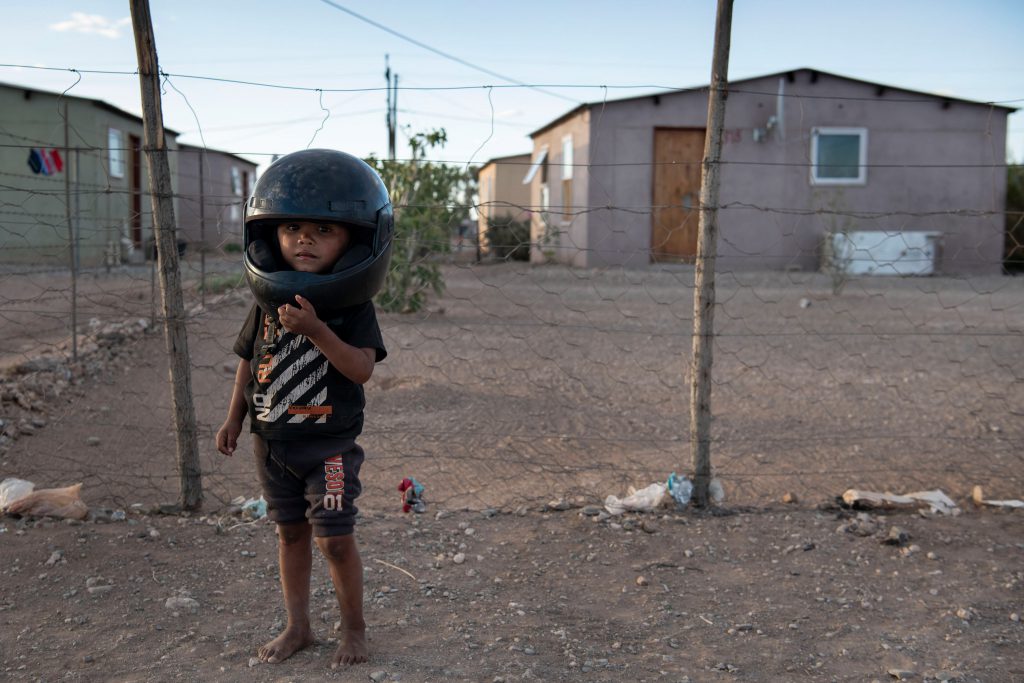
Four-year-old Renden Jooste playing in the township. -
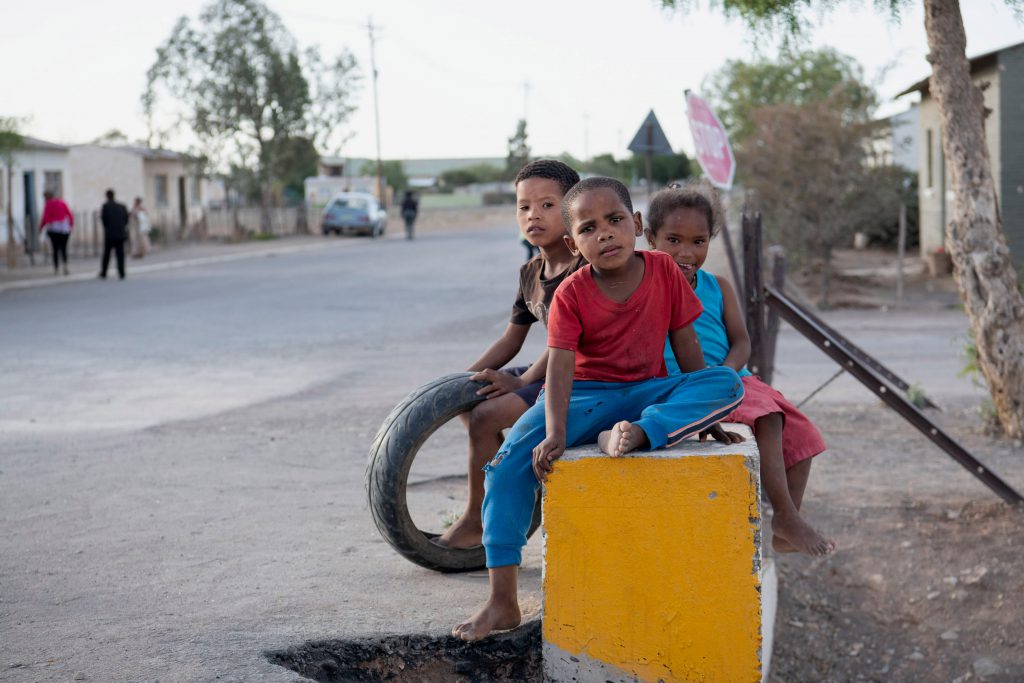
While climate change looks likely to deplete the Karoo’s surface water resources, it is unclear that the same can be said of groundwater supplies. A recent analysis of the rate of replenishment in aquifers around sub-Saharan Africa published in Nature, arguably the world’s foremost science journal, challenges the idea that water beneath the ground will decrease as the planet continues to warm.
But perhaps the greatest threat a changing climate poses to the delicate Karoo comes back to its at once monochromatic and kaleidoscopic veld. Days are getting hotter and temperatures threaten to scorch what the drought has not starved, further endangering the future of a sheep-centred economy and the livelihoods that depend on it.
Like the Karoo, Piet and Heleen van Wygharden have always known drought. It has parched their whole lives. But, like many other impoverished families, they were not able to survive the past seven years in the ways they had before. It has consigned them to an old age in a new home, far from the security they spent their lives building.
Apparently caught in a perfect storm of a unique and damaging ecological history and the uncertain but looming effects of climate change, the Karoo may share a similar fate.

